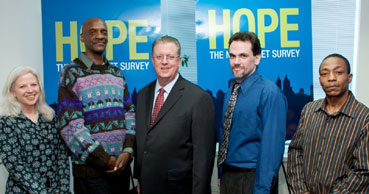When I ask W if she's been busy, she turns to her computer and gives me sly smile. "Of course... life's too short to be sitting around."

This sentiment certainly seems to be in the air at First Step, a job-training program that "empowers homeless and low-income women to achieve employment and educational goals through computer training, case management, literacy building, internships, job-placement assistance, empathy and hope."
Each Tuesday I get the privilege of spending time here, helping women out with everything from writing a cover letter, to coaxing one of these fussy Dells back into operation. Mainly I just try to soak up the amazing community of personalities that make up this place. These are real faces for the difficult job market... women who are working hard to overcome not just the current economic downturn, but also a systematic pattern of hardship that makes their lot especially difficult. You think it's hard to find a job? Try it when you've been out of the work force for a few years, your disabled, you struggle to type, don't have a college degree (or even a high school degree). How about when you've been homeless?
What strikes me is that these amazingly interesting, funny, capable and valuable ladies show up every day... searching for any chance they can to earn a living for themselves.
What strikes me is that these amazingly interesting, funny, capable and valuable ladies show up every day... searching for any chance they can to earn a living for themselves.
But W is special. In her 60's, without a college diploma, her job search is tough. She says herself "Someone 50 and older.... who wants to hire someone like me?" But despair is the last thing I feel in this woman's presence.
It's this sense of adventure, this refusal to stop demanding the pleasures of life, that I find everywhere with the poor and homeless people I meet. In the push to provide our neighbors with food and shelter, we forget that god made their eyes for movies too, he gave them ears for jazz and brains for exploring every inch of the universe we share. It's nice to meet someone once and a while like W, who may be struggling to find a job, but has refused to stop looking for her soul.









